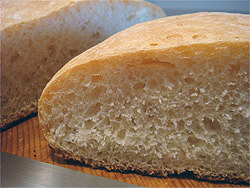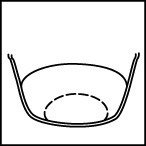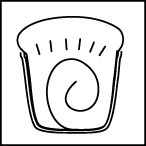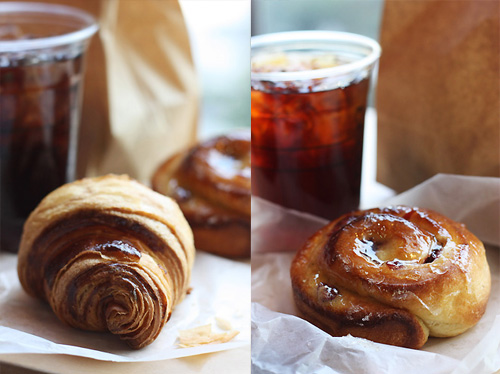
Growing up, I loved watching my mother bake. Whenever she poured cups of sugar into the mixing bowl, it almost felt like watching snow fall. As soon as I had the financial ability to buy myself some flour and baking tools, I started experimenting with the oven.
I started out with the recipes that seemed simple enough, such as chocolate chip cookies and banana bread. And I was able to get reasonably successful results, moving onto more challenging-looking recipes. The final results seemed good enough to move on: just like how I move onto the next piece of music on the piano after sight reading through it once.
Then, I faced a wall. A tall and thick wall called yeast bread.
Being the arrogant young home baker, I decided to challenge bagels. Little did I know how damn difficult it is to make bagels. Things were going fine until I started kneading. The stiff dough wasn’t getting any more elastic, like the recipe mentioned, and my wrists were starting to get a little sore. “This has got to work,” I thought to myself, refusing to accept the possibility of a miserable failure. I had been kneading for over twenty minutes now. The dough must have formed enough gluten bonds or whatever.
Sure enough, my pathetic rings of white dough didn’t rise at all in the oven. I could swear I followed the recipe to the period. But what I had after four hours in the kitchen were stiff flour rocks that couldn’t even get by as bagel chips.
After that, I tried several more times, praying for a loaf of soft, chewable bread out of my oven. Nope. My fifth or sixth attempted resembled bread, but it tasted like uncooked, dry dough in the center. I had no idea what the hell I was doing wrong. I just convinced myself that bread baking was a completely different category and not meant for everyone. Yup, I gave up: I scratched off home-baked bread of the list of things I could enjoy in life.
Then, on a humid summer day last year, I had this sudden urge to give it another try. It had been more than three years since the last attempt, and I didn’t even have yeast. After a quick trip to Whole Foods, I started putting together the dough and kneading. I had good feelings. And look what came out of the oven!
*congratulatory dance*
Ever since my first loaf of edible bread, I’ve been baking bread nonstop and even signed up for professional courses. I have learned so much from all the trials and errors, as well as the classes. For the next few posts, I’d like to share some of the tips so you can enjoy warm, fresh homemade bread in your own kitchen.
In this introductory post, I’ll go over the basic process of bread baking. I’ll cover each step in much more details in the following posts.
So let’s get started!
Almost every bread recipe will go through the following process:
Mixing & Kneading → First Rise → Shaping → Second Rise → Baking
Let’s take a look at what each stage is all about:
Mixing & Kneading
Tasks are simple enough; you mix in all the ingredients and knead it for some time to get a ball of smooth, homogeneous dough. This step is to build a strong yet soft and elastic network of dough (technically gluten, flour protein, bonds) that would expand evenly and easily when the yeast starts producing gas. Think of it as making the materials for balloons; it should blow up easily without any holes or stiff spots.
The first rise
The bread would be dense and stiff if there was not much air inside. So we let the yeast do their work and release gas into the dough, until the volume doubles. There’s nothing else you do except leaving the bowl in the right temperature and humidity. However, this is only the first rise, meaning that you’ll deflate the dough afterwards; think of it as a warm-up session for “dough blowing” so it expands more easily later on.
Shaping
After the first rise, now it’s time to shape the dough into a ball, spiral, etc. But before you do any rolling and twisting, the dough needs a little “bench time” (will discuss in depth later). Then you shape the dough into the final shape that will be inflated with the yeast’s gas. Because it will expand much more later, the initial shapes are much thinner and flatter than the final product.
The second rise
Like the first rise, you let the yeast do its job to inflate the dough. This stage requires setting up the right temperature and humidity as well. The dough is let to expand up to about 80% of the final volume you’d like, since the yeast will continue to release gas up to the point of its death around 140F degrees.
Baking
Now it’s time to bake! You put in the inflated dough into the hot even, solidifying the dough into a brown, stable structure of yumminess. As mentioned above, the dough will continue to expand a bit more in the hot oven.
I’ll be posting about each step in more details. Please let me know if there’s anything you’d like me to add or fix in the articles!














